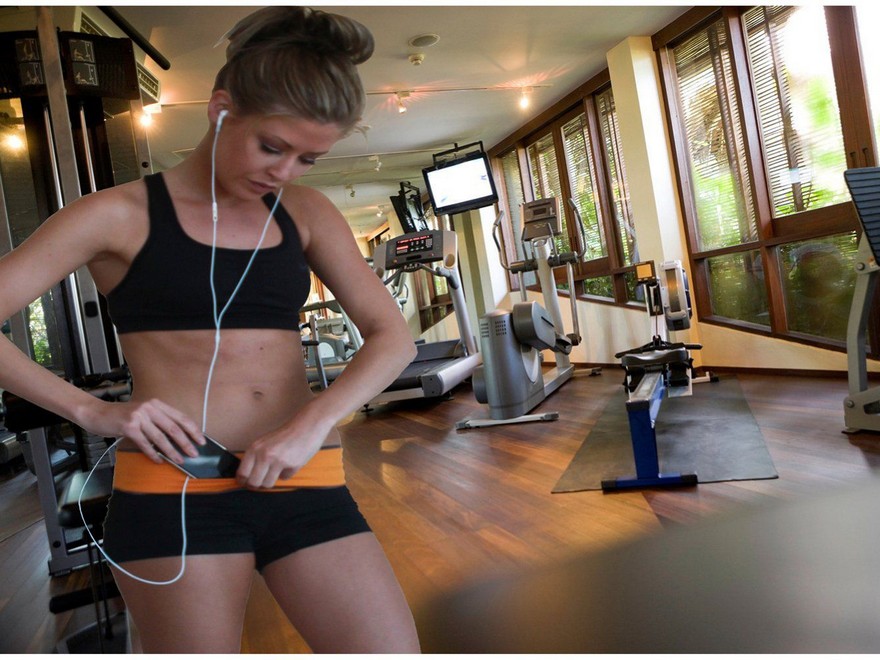Stair Working Exercises to Construct Pace and Energy

In case you’re searching for a high-intensity exercise that helps construct velocity, energy, and cardiovascular health, stair working is right. Working stairs can also be an important addition to any agility coaching program as a result of it builds quickness and foot velocity whereas offering a wonderful dash exercise.
Advantages of Stair Working
Working stairs targets a few of the largest muscular tissues within the physique, together with the glutes, quads, and calves—the identical muscular tissues used for lunges and squats. Stair working is a plyometric train, which means the muscular tissues exert most drive in brief intervals of time, inflicting the muscular tissues to increase and contract in a speedy or "explosive" method. Working up stairs additionally forces you to work in opposition to gravity, constructing power and energy."
Stairs are a lot steeper than most hills, so working stairs will make climbing hills simpler. Stair working accelerates your coronary heart charge quickly and makes you breathe sooner to absorb extra oxygen. This, in flip, improves your VO2max—the utmost quantity of oxygen you need to use throughout intense train.
A 2005 NIH examine printed within the British Journal of Sports activities Medication confirmed that brief bouts of stair-climbing 5 days per week for eight weeks improved VO2max by 17% in ladies.
One other examine, printed in a 2016 difficulty of BMJ Open Diabetes Analysis & Care, discovered that strolling up and down stairs for 3 minutes 60 to 180 minutes after a meal lowered blood sugar ranges in individuals with sort 2 diabetes.
The place to Run Stairs
Many athletes run stairs at a stadium, however it’s also possible to search for a stairway in a park or different outside location or a stairwell in a constructing. In case you don't have quick access to stairs the place you reside, be looking out for a hill with a reasonably steep incline. Hill repeats present an identical exercise to stair working and could also be barely simpler to get began with.
And don't confuse stair working with utilizing a stair climbing or elliptical machine. Working stairs requires extra focus, extra management, and extra muscular tissues to carry out nicely. Plus, you don't have to hitch a gymnasium or purchase an expensive machine your self. Discover a good set of stairs and also you're good to go.
Getting Began
If you have not accomplished stair exercises earlier than, you need to plan to start out slowly and progressively construct up your time and depth. Stair working makes use of muscular tissues you could not have used earlier than, and overdoing your first exercise will lead to pointless muscle soreness. Observe these tips as you construct as much as a daily routine:
- Be sure to heat up completely previous to your stair working exercise. Strolling briskly on a flat floor for 5 to 10 minutes is an effective method to get the blood flowing and limber up.
- Keep away from working stairs in your first few exercises. Start by strolling up the steps, one step at a time. As you construct as much as a jog, preserve your weight centered together with your head up and eyes trying ahead relatively than down at your ft.
- By week three you’ll be able to start working, or maybe attempt to take two steps at a time
- Use the return to the underside as your relaxation interval, after which do one other set
- Work as much as about 10 units per exercise relying upon the size of your stairs. A 20 to 30-minute exercise provides you with loads of depth
- Add stair working into your exercise routine in your high-intensity coaching days or as a part of an interval coaching exercise. Normally, it is best to not do greater than two stair exercises per week.
What Goes Up Should Come Down
Strolling down the steps could appear to be a breeze after working up them, supplying you with an opportunity to catch your breath. Going downhill additionally has shocking advantages on blood sugar, in keeping with analysis introduced on the American Coronary heart Affiliation Scientific Classes in 2004.
Nonetheless, strolling downstairs places extra pressure in your knees and ankles than strolling up. You hit the bottom more durable with every step. Typically, it is the descent that causes probably the most post-workout soreness as a result of eccentric nature of the muscle contraction on the way in which down the steps. So in case you are new to stair exercises, take it simple on the way in which down for the primary a number of exercises. When you have important knee points, stair working will not be the correct train for you.
A Phrase From Verywell
Whereas stair working has many advantages, remember the fact that it’s a strenuous train and will not be appropriate for everybody. If you’re questioning if it's protected for you, discuss to your physician earlier than starting a stair working program—and at all times cease your exercise for those who discover any aches, pains or different damage warning indicators.




